We are happy this time. Happy as we are not going on a very unique journey like before. Neither are we excited to show you hidden Nepal. Rather, excited to visit places suggested by our viewers. After all, not being unique still has some qualities in it. This time, revealing such qualities is the objective of our journey.
In the final episode of the “Heaven is Myth Nepal is Real Season 3,” we will be heading to the Illam eastern part of Nepal. We welcome you to this episode where we will explore the immense potential of exotic tourism and agriculture in the eastern region of Nepal.
On the first day of our journey, we had determined to travel from Kathmandu to Morang district, covering a distance up to Pathari-Sanischare. Hemant Dai, the guardian of our team, being from the village of Pathari-Sanischare, so we initiated our journey from there.
On the second day of the Eastern Nepal journey, we began our exploration from Pathari-Sanischare. This area is intersected by the East-West Highway, also known as the Mahendra Highway. As a result, everyone could feel the significance of Pathari-Sanischare. After a brief rest during the night, we resumed our human-powered journey, and once again, the rhythm of our footsteps echoed along the path.
In this expanse of 79.89 square kilometers, there is a densely wooded area in one part of this verdant region, while in another part, there is a thriving settlement. This area is home to approximately 16,621 households, with around 60,000 people residing in this locality. Within the Pathari-Sanischare Municipality, the majority of the population is engaged in a mix of agricultural, commercial, and other economic activities. Despite all of this, we all felt like home at Hemanta Dai’s house.
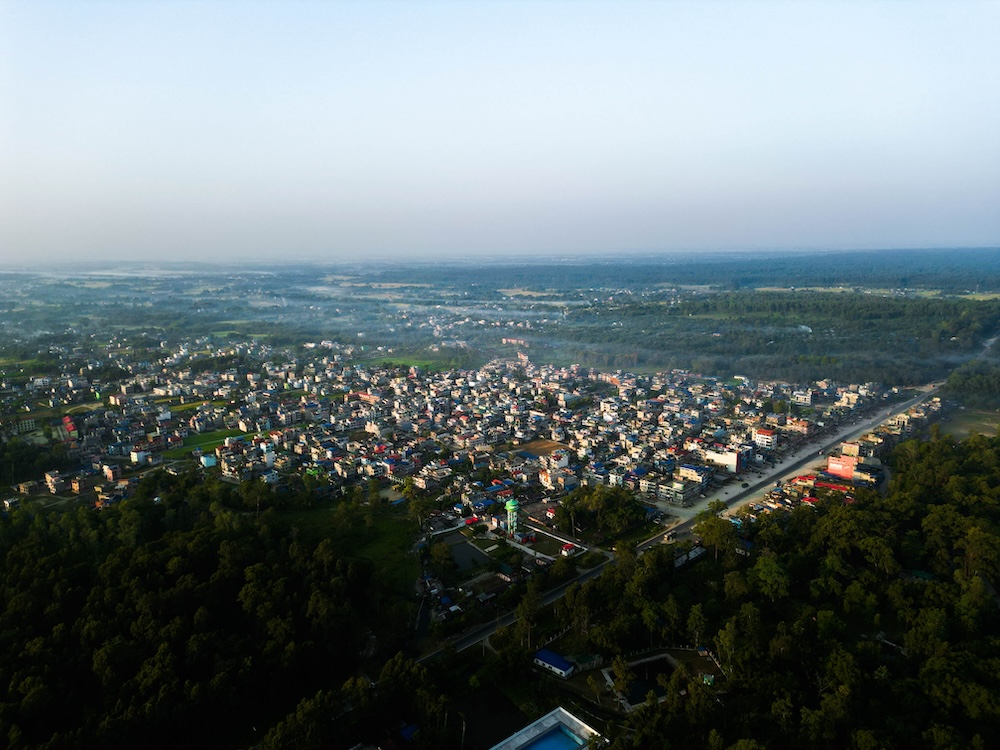
Listening to my sister’s words, a sense of melancholy overwhelmed us. The realization that nothing would be achieved without perseverance echoed in my mind. We started getting ready for our journey after having ‘Bhakka’ , a traditional dish of eastern Nepal. This was our final expedition with the Honda Grazia. Although we were sad about it, somewhere we really felt grateful for this collaborative venture.
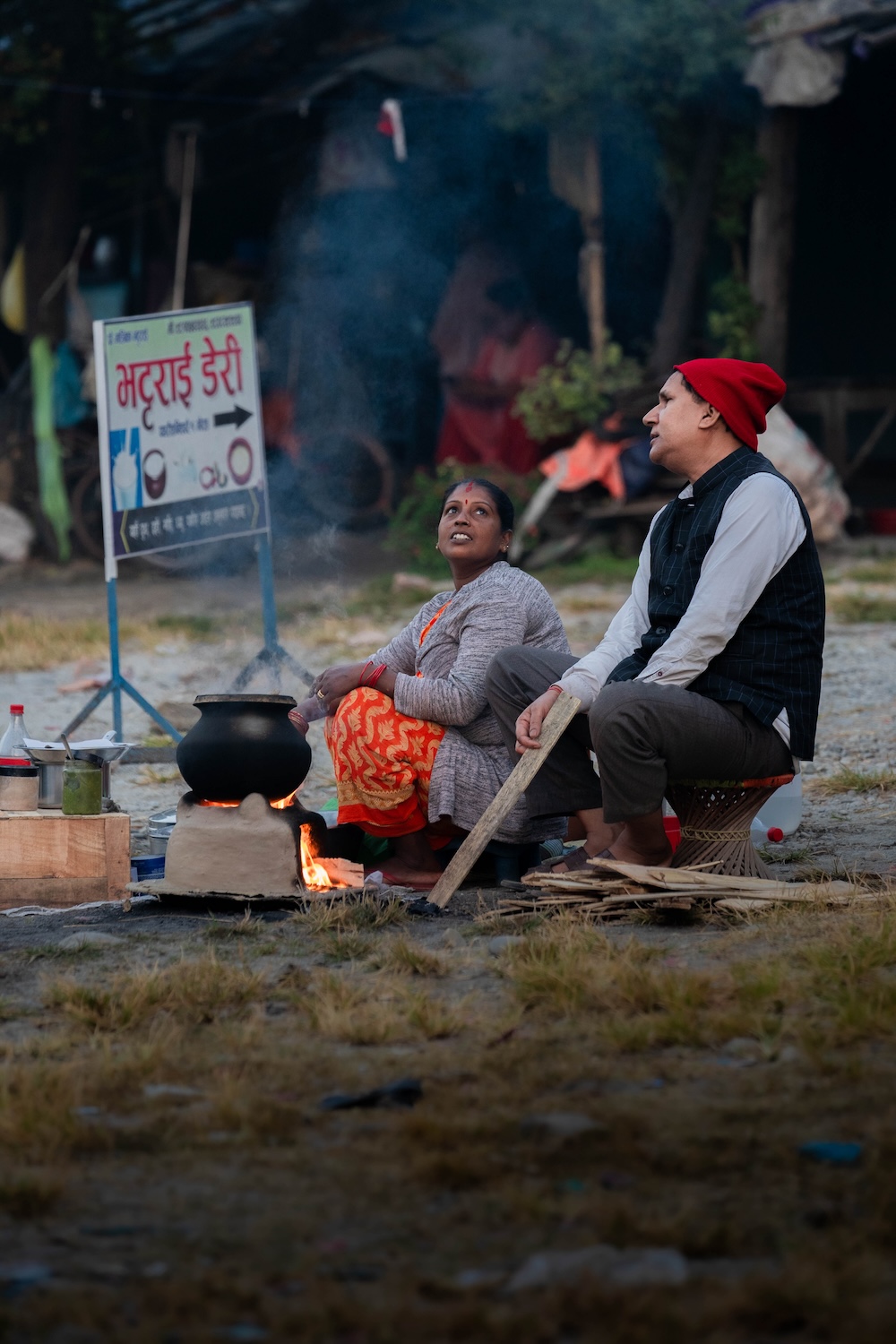
With the gradually dissipating heat, a unique tranquility spread through the weather. Filled with enthusiasm, we advanced towards the bustling Mahendra Highway, connecting eastern Nepal with the west. This highway spans a total length of 1050 kilometers, linking Mechi Nagar in the east to Bhimdatta in the west. The impact of this highway on the social and economic development of the region, from Mechi Nagar in the east to Bhimdatta in the west, has been evident.
Throughout the year, we explored many places. Some places we had seen before, and others we hadn’t. We showcased numerous places to our audience, and in turn, they exposed us to various locations. Throughout the journey we expected this relation to be more bolder. And this very sentiment was our inspiration for the journey.
After Pathari-Sanischare, we entered Damak in Jhapa district. We left Damak which is known as an industrial and commercial center in eastern Nepal and we continued our journey forward.
Jhapa district, spanning 1606 square kilometers, is situated in the Terai region, where fertile plains extend. Just as other parts of Nepal are renowned for their biological diversity, Jhapa is also celebrated for its lush jungles, fertile plains, and diverse flora. The climate here is characterized by semi-tropical and tropical conditions, making it suitable for agriculture.
The Kankai Mai stream flowed peacefully and gently beneath the Kankai Mai Bridge. In Ilam district, it is known as Mai Khola, and as it enters Jhapa, it is recognized as Kankai Khola. Therefore, it is commonly referred to as Kankai Mai Khola.
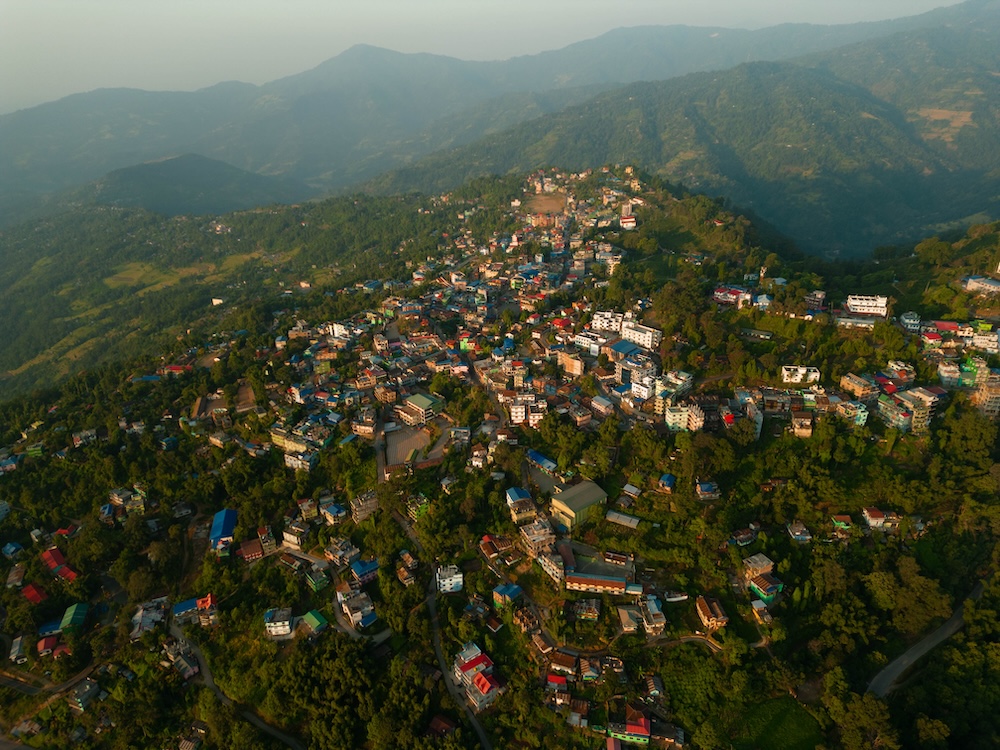
When we reached Briksya Cafe, Durgapur in Jhapa, the average temperature had risen more than in the early morning. We were delighted by the warm reception and small ceremony at Vriksha Café. After taking some time to relax and engage in conversations with each other, we found relief from our fatigue journey. Having enjoyed some snacks and overcome our tiredness, we spent some time there planning for the upcoming journey.
We deviated from the Mahendra Highway and took the Charpane-Shanischare road. Our plan was to reach Arjundhara via this road segment. Although we had our plans, we ended up having our scooter damaged in the middle of our journey.
Thank god, we didn’t face any severe accident. It was a journey, and during the journey, apart from coping with uncertainty, we had no other options. In such a situation, the locals there also supported us.
After spending some time in Arjundhara for a while, we continued our journey. Throughout the journey, we could see landscapes where crops were being grown . Along the roadside, neatly arranged betel nut trees were visible. Here, we experienced a blend of both religious and historical sites. As there was no shortage of flowing rivers, tea cultivation was carried out in a cash crop manner.
In addition to betel nut farming and tea gardens, we also observed some individuals engaged in mulberry cultivation. In the past, the presence of Bhutanese refugees of Nepali origin, settled in the vicinity, brought attention to the cruelty of the world. Occasionally, seeing people organized in their fields and terraced landscapes brought joy. Until now, we hadn’t faced any difficulty regarding the weather. The gentle touch of sunlight and the balanced atmosphere with the breeze from the east remained pleasant.
We were heading towards Shree Antu through Budhabarey. In history, every Wednesday market was established hence it was named as Budhabarey. We were ascending towards the Sivalik mountain range, leaving behind the mid-hills. The day was coming to an end, and the warmth of the sun had subsided, while a cool breeze eagerly welcomed us.
After some time, we started entering Ilam district, leaving behind “Queen of the East Nepal,” which refers to Jhapa district. As we entered Ilam district, along with it came the lush greenery of the hills and the refreshing breeze from the eastern mountains, creating a home in our hearts.
When we arrived, it was dusk, with the day and night meeting at the horizon. The sky was clear with some mist that wrapped the hills like a blanket. The sight of tea plants aging gracefully in the terraced hills created a captivating scene. Ilam is renowned for such breathtaking views. These scenes attract hundreds of domestic and international tourists and also provide employment opportunities for the locals. Kanyam is one such place where the journey begins to explore the taste of Nepali tea.
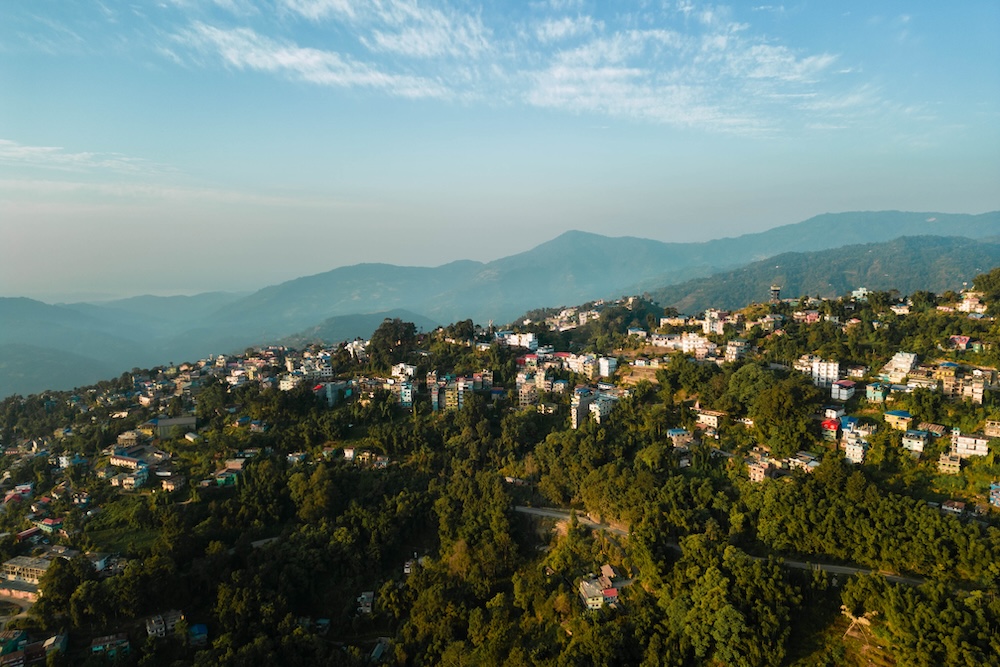
In the process of searching for the drone, some time had passed. Moreover, the destination of our day, Shreeantu, was still quite far away. However, Kanyam is within the Ilam Municipality. Similarly, both Shreeantu and Pashupatinagar are also within the same municipality. After arriving in Eastern Nepal, we felt no inclination to leave Kanyam soon. As we proceeded towards Shree Antu again, it felt natural to pause there for a while. Shreeantu was perched on a hill, making it challenging to reach before sunset. Despite the delay, experiencing the night settling over Shree Antu before reaching there provided us with some relief.
Shree Antu is renowned for its sunrise. After reaching Shree Antu if we didn’t witness the sunrise then what was the point of getting there? After climbing for a few minutes we reached the view tower to enjoy the sunrise. We noticed a lot of people had arrived to witness the sunrise. Just beside the gate of view tower some individuals were actively selling tea snacks. It was a good example of where there is demand there is supply. As we entered through the gate after purchasing tickets, there was an atmosphere of enthusiasm among the visitors, eager to witness the sunrise .
From the opening in the mountains, the fiery edge of dawn was tearing through the darkness, painting the sky with rich hues of orange and gold. The sunrise had declared a war for a new day, resonating like the sound of conch. The sun, carrying the source of energy for the entire world, rose triumphantly, dispelling the darkness far and wide. And so, our journey through Eastern Nepal embarked on its third day, starting with the sunrise of Shree Antu. What better beginning could there be than this?
After the sun had fully risen, people dispersed with a sense of satisfaction. Captivated by the beautiful sunrise of Shree Antu, we too reluctantly turned towards the direction of our Jade Lake Cottage.
We returned to Antu Pokhari. Antu Pokhari, even if it’s for just a day, remains a place where people come to celebrate life, away from the hustle and bustle. Especially for those seeking relief from the heat of the Terai region, even for a few moments, people come to explore Antu Pokhari. Along with the sunrise, Shreeantu offers a view of Antu Pokhari, tea gardens, and the well-built hotels where one can enjoy a tranquil atmosphere. In Shreeantu’s vicinity, we had arranged for all the facilities needed at Jade Lake Cottage. Even if someone plans to visit Shree Antu, Jade Lake Cottage has the capability to provide excellent services. With five cottage rooms, three couple rooms, and the arrangement of a hall room, we found the atmosphere in this hotel exactly as we had anticipated.
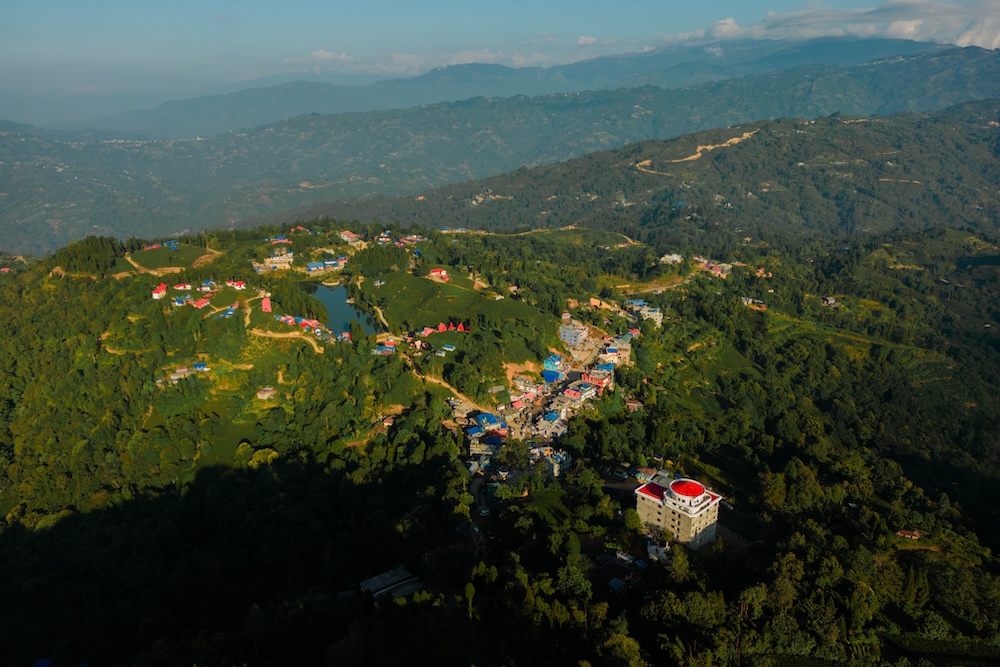
This area, spreading across 24.08 square kilometers, is not only known for tea but also for the cultivation of cardamom and ginger. Situated within Ilam district, this place is a prominent tourist destination. Observing the numerous tea gardens, we were intrigued by their history. Delving into its history, we learned that Ilam Tea Estate, established in 1863, is considered the first tea estate in Nepal. Particularly, the initiation of tea production near Darjeeling, which is in close proximity, also contributed to Ilam acquiring a significant place in the history of tea cultivation in the eastern part of Nepal.
People had come there to work for their families like her. She was smiling amidst her sorrows. There are definitely a lot of things that we could learn from her.
Just like she suggested, we reached Buddha Park after a few minutes. When we arrived there, the tranquil envoy Buddha statue, with half-closed eyes, exuded an aura of serenity all around.
Buddha Park had added an extra layer of beauty to the surroundings, enhancing its charm. The reason behind covering the face of the Buddha statue is that the park is still under construction. According to locals, it was expected that Buddha Park would be open for visitors within the next few years.
After Buddha Park, we started wandering around the tea gardens there. If you haven’t captured photos amidst the tea gardens of Ilam, how will you know that you’ve been to Ilam? Some people were engrossed in capturing the serene beauty of nature on their cameras, while others were lost in the tranquil atmosphere that nature provided.
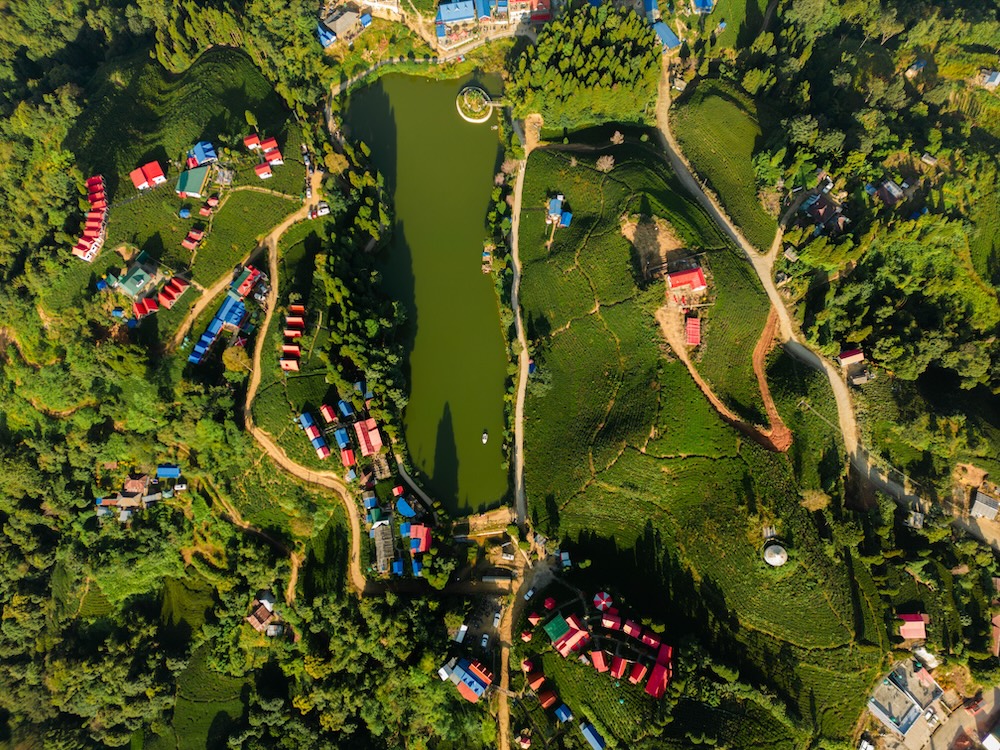
Now, we were heading to the famous Ilam’s Lollipop factory, a place known for making traditional sweets. Probably there are few of them who haven’t tasted Ilam’s Lollipop yet. With the nostalgia of childhood and the anticipation of learning how Ilam’s Lollipop is made, we were eagerly awaiting to discover the secrets in just a few moments.
After visiting the lollipop factory we went to see the cheese factory. Lucky Dairy has been engaged in cheese production for several years. We inquired about the cheese-making process from one of their employees. The primary task involves collecting and testing milk to ensure it is suitable for cheese production. Subsequently, the milk is heated to a specific temperature. All the manufacturing processes take place in the factory, where the cheese is shaped into a spherical form and left for some time. After a few hours, the cheese is immersed in a tank with salt water and then stored in a temperature-controlled room. This was the procedure they explained to us for making cheese. The demand for Lucky Dairy’s cheese is high in Kathmandu, and a certain percentage is also exported to India. They have plans to enter the international market in the near future, indicating their confidence on a global scale.
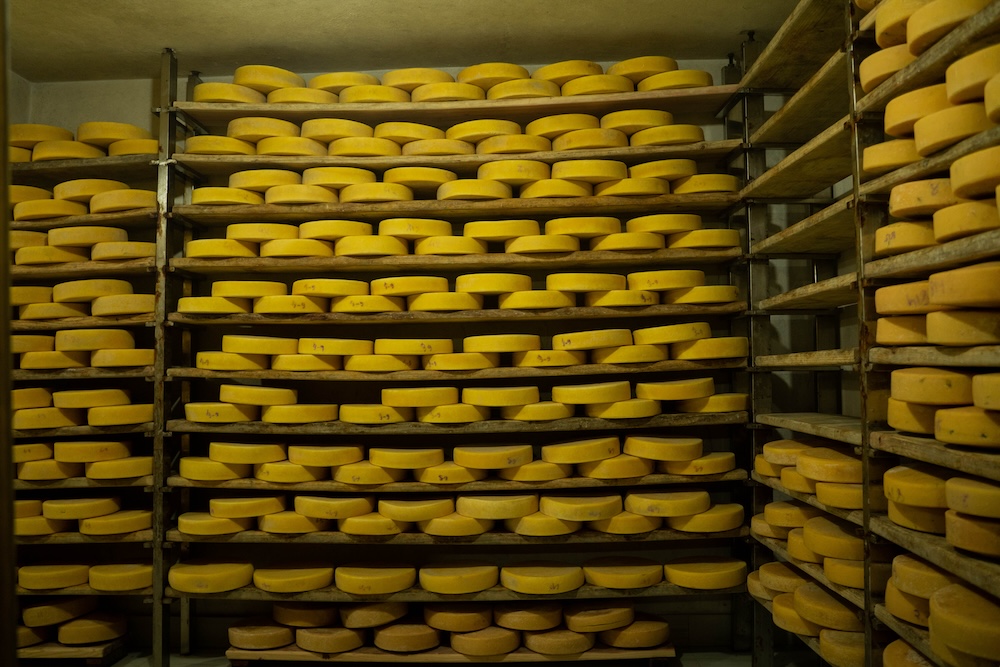
After the Cheese Factory, we went to Siddheshwar Tea Estate in Ilam, which is renowned for its tea production. Here, freshly plucked tea leaves are transformed into tea. We inquired about the tea production process from Samir Shrestha, the director of Siddheshwar Tea Estate. Initially, the freshly plucked tea leaves are collected and processed. Subsequently, ‘Tinpate’ leaves are chosen which includes two leaves and a bud. After plucking the green tea leaves, they are left to wither, and the moisture is removed by blowing hot air overnight. Once the green tea leaves are withered, they go through the rolling section. The condition of the leaves during rolling provides a conducive environment, making the tea taste better. After drying the leaves at a specific temperature, the prepared tea is ready for packaging. Although this may sound simple, we realized that the process was more complex when we saw it firsthand. According to Samir Shrestha, there is no market for tea production in Nepal, mainly because while there is a surplus of tea, the demand is comparatively lower. Therefore, the market with high demand for tea is in India, where tea plantations export their products.
After visiting these three factories, we learned that Ilam is ahead of other places in transforming agriculture into a business. Not only Ilam’s renowned establishments like Tea Estate but also local businesses like Ilam Lollipop and Churpi have found a good market. Seeing the positive economic impact of these enterprises, we were impressed. Now the area around Pashupatinagar, near the Nepal-India border, was our next destination.
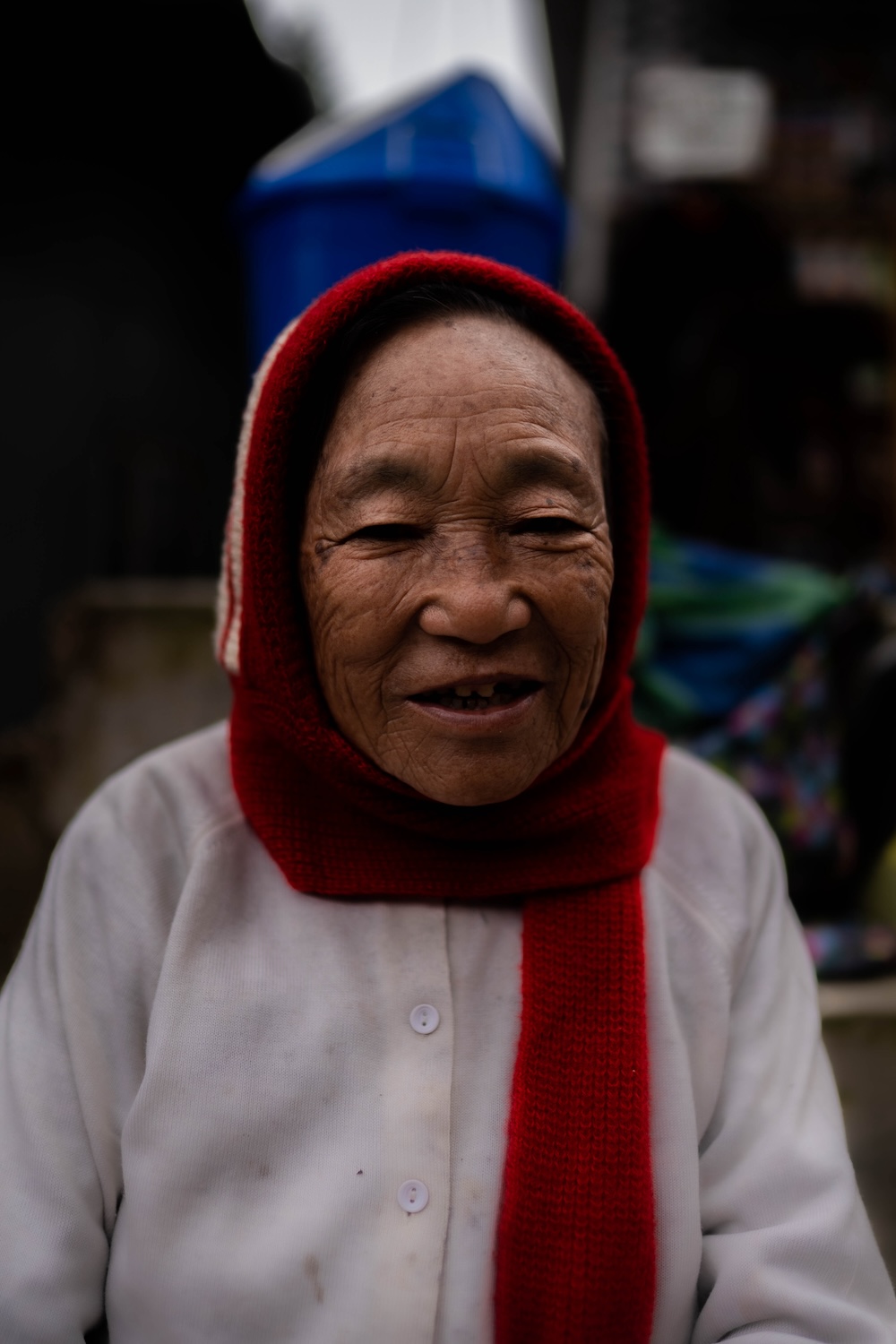
Pashupatinagar, situated within the Suryodaya Municipality in Ilam District, lies on the border of Nepal and India. If you travel a few kilometers beyond Pashupatinagar, you will reach Darjeeling in India. When we arrived, Pashupatinagar seemed colourful and bustling with activity. Numerous shops were filled with handicrafts, and we observed various items crafted by skilled hands. Due to its location on the border, security was well-maintained, and we did not witness any disturbances in the local activities. Before Sugauli Treaty Nepal had it’s border upto Tista river. But after the Sugauli Treaty, the boundary extended up to the Mechi River. Despite these historical facts, the difference between the two sides was not stark, and we could only discern an invisible boundary. People moved freely across the border, interacting seamlessly between Nepal and India. Witnessing the lively cross-cultural interactions and the flourishing trade in this border town was indeed fortunate.
Nepal’s open border with India has both advantages and disadvantages. However, Pashupatinagar, with its vibrant atmosphere, had captivated us. For a brief moment, history unfolded before our eyes. Immersed in the deep recollection of history, we headed towards the road leading to Ilam Bazaar. As we walked from Pashupatinagar towards Phikkal, the morning sun, emanating from the west, gradually ascended and cast its warm rays on the distant hills of Antu.
Today was a day filled with unique memories for us. This time, we embraced both the natural and industrial aspects, along with the social dimensions, culminating in our day three journey’s end in Ilam Bazaar.
Ilam, spread across 172.23 square kilometers, showcased the dance of its tea gardens, adorned by the first rays of sunlight in eastern Nepal. Positioned in the lap of the hills where the rays of the sun kiss the land first, Ilam unfolds its limitless potential in agriculture every day. People of various ethnicities, including Rai, Limbu, Brahmin, Kshatriya, and others, have settled here, engaging in agriculture, trade, and tourism. Ilam is renowned for commercial crops such as tea, cardamom, ginger, oranges, potatoes, mangoes, and Akbare Khursani (a type of chili). Geographically, Ilam is enriched by the Siwalik and Mahabharat mountain ranges, and the suitable climatic condition is outstanding for agriculture.
Having breakfast in Ilam Bazaar, we set our course towards Mai Pokhari. The bustling market of Illam, connecting visitors and locals, resonated with the rhythmic dance of the sun’s radiant beams, breathing life into the forests, jungles, and serene ponds. It felt as if the tilting rays of the sun were whispering stories of a rejuvenated existence. As in the morning, Ilam prepared for its daily routine, the enchanting view captivated our senses. With this we set our journey travelling hills and foothills towards Mai Pokhari.
Around two years ago today, we went to Sandakpur from here. In the interval of two years, many things were changed with the course of time. Accepting the faith of glorious time the pages of old memories were turning one after another.

As we moved forward, we saw some people picking tea leaves in the tea gardens. It seems this place has provided employment to many. Their lives have improved. While in most places in Nepal, people move to cities or urban centers for settlement, Ilam has been providing opportunities to people right there. Here, there are numerous tea industries that export tea, not only to the domestic market but also to other international markets, including India. Even though its contribution to the national economy may not be as significant, in Ilam, every person’s life is intertwined with the tea gardens. Seeing such an interdependent relationship was inspirational. It was a beautiful example of self-sufficiency. Gazing at such scenes, we entered Mai Municipality.
After a few hours of travel from Ilam Bazaar, we found a suitable place to rest. Hungry and tired, we stopped at Maipokhari’s serene atmosphere to have our meal. After enjoying our food, we took some time to relax and capture the picturesque views of Maipokhari.
Maipokhari is situated at an altitude of 2,121 meters above sea level and holds special significance from religious, cultural, and natural perspectives. It is recognized as the first Ramsar site in Nepal, designated for its unique geographical features. Shaped like a star with nine corners, Maipokhari is especially revered by followers of Hinduism during the auspicious days of Vaishakh Purnima and Haribodhani Ekadashi. This lake serves as not only the religious center for Hindus but also holds significance for adherents of Buddhist and Kirat religions, making it a place of diverse spiritual and religious importance.
According to folklore, King Marut of Bharatvarsha came to this place and installed the idol of Navadurga, meaning the goddess with nine forms. To protect and preserve this idol, he performed worship to the river Ganga. As a result of the king’s devotion, water originated at this place. Subsequently, Maipokhari was created and is now established as a Ramsar site.
From a religious perspective, as well as from a natural standpoint, Maipokhari holds great significance. During the blooming season of rhododendrons, more than 10 species of rare rhododendrons bloom here, adding vibrancy to the environment. Additionally, the lake is home to a variety of rare flora, including the Galiche Jhau, which is considered extremely rare worldwide. The lake also hosts colorful fish and unique amphibians. The area attracts researchers and scientists interested in studying both the biological diversity and the unique flora of this region. Maipokhari stands as a testament to the unparalleled beauty of nature surrounded by hills in the Ilam district.
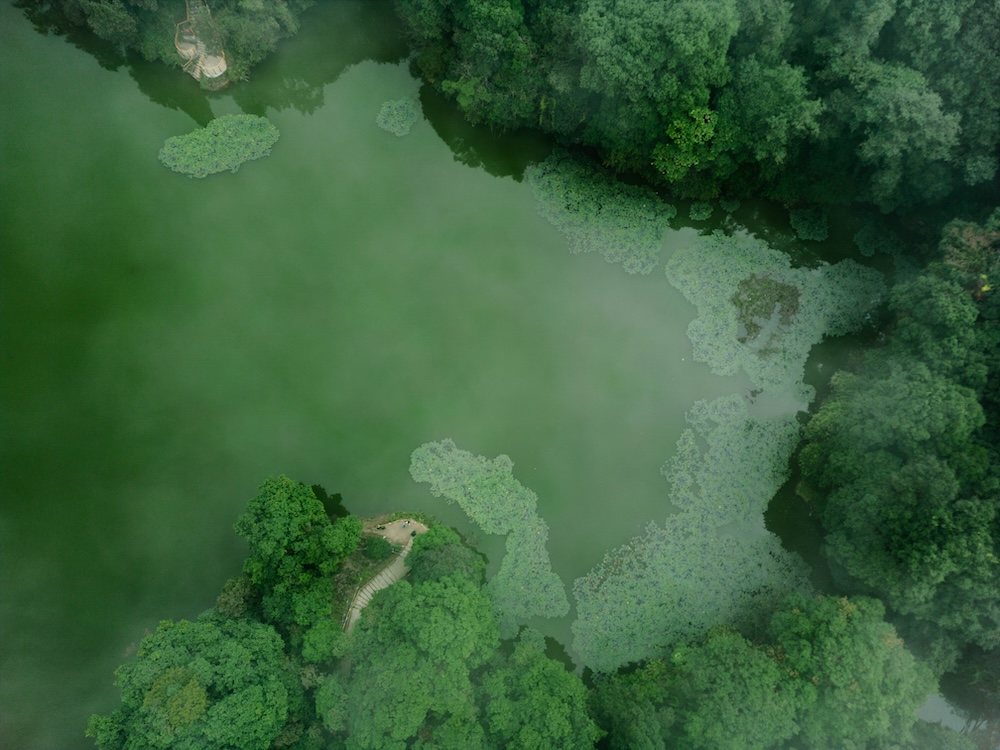
Creating a bowl of current noodles while losing oneself in the enchanting scenery of eastern Nepal was a source of immense joy for a brief moment. The availability of quick and freshly prepared noodles allows us to enjoy this delightful dish wherever we go.
This small initiative aimed to present our eastern Nepal from a different perspective. We express gratitude to the sponsors who supported this endeavor. Likewise Suruj Giri, Sudip Baskota, Bivek Gurung, and Kailash Shrestha, whose invaluable contributions made this journey possible. Above all, our deepest gratitude goes to you, the viewers, who accompanied us throughout this entire chapter. As we turn the last page of this chapter today, we find ourselves standing on the threshold of a conclusion, where we will share memories from the alley of nostalgia.



Comments are closed.